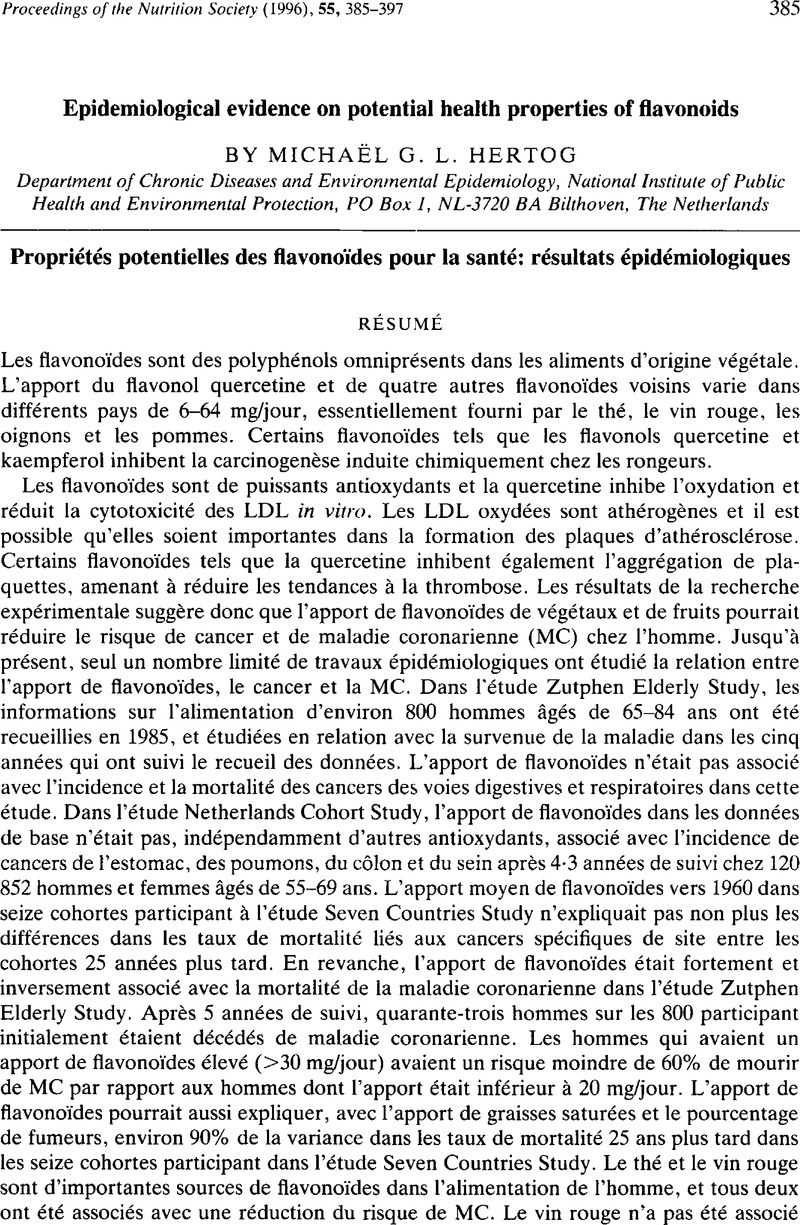Crossref Citations
This article has been cited by the following publications. This list is generated based on data provided by Crossref.
Nielsen, Salka E
and
Dragsted, Lars O
1998.
Column-switching high-performance liquid chromatographic assay for determination of apigenin and acacetin in human urine with ultraviolet absorbance detection.
Journal of Chromatography B: Biomedical Sciences and Applications,
Vol. 713,
Issue. 2,
p.
379.
KANAZAWA, Kazuki
YAMASHITA, Takatoshi
ASHIDA, Hitoshi
and
DANNO, Gen-ichi
1998.
Antimutagenicity of Flavones and Flavonols to Heterocyclic Amines by Specific and Strong Inhibition of the Cytochrome P450 1A Family.
Bioscience, Biotechnology, and Biochemistry,
Vol. 62,
Issue. 5,
p.
970.
Fuentes-Granados, Roger G.
Widrlechner, Mark P.
and
Wilson, Lester A.
1998.
An Overview ofAgastacheResearch.
Journal of Herbs, Spices & Medicinal Plants,
Vol. 6,
Issue. 1,
p.
69.
Graefe, E.U.
and
Veit, M.
1999.
Urinary metabolites of flavonoids and hydroxycinnamic acids in humans after application of a crude extract from Equisetum arvense.
Phytomedicine,
Vol. 6,
Issue. 4,
p.
239.
Packer, L
Rimbach, G
and
Virgili, F
1999.
Antioxidant activity and biologic properties of a procyanidin-rich extract from pine (pinus maritima) bark, pycnogenol.
Free Radical Biology and Medicine,
Vol. 27,
Issue. 5-6,
p.
704.
Bors, Wolf
and
Michel, Christa
1999.
Antioxidant capacity of flavanols and gallate esters: pulse radiolysis studies.
Free Radical Biology and Medicine,
Vol. 27,
Issue. 11-12,
p.
1413.
Gamet-Payrastre, Laurence
Manenti, Stéphane
Gratacap, Marie-Pierre
Tulliez, Jacques
Chap, Hugues
and
Payrastre, Bernard
1999.
Flavonoids and the inhibition of PKC and PI 3-kinase.
General Pharmacology: The Vascular System,
Vol. 32,
Issue. 3,
p.
279.
Breinholt, Vibeke
1999.
Natural Antioxidants and Anticarcinogens in Nutrition, Health and Disease.
p.
93.
Lugast, A.
and
Hóvári, J.
2000.
FLAVONOID AGLYCONS IN FOODS OF PLANT ORIGIN I. VEGETABLES.
Acta Alimentaria,
Vol. 29,
Issue. 4,
p.
345.
Meydani, Mohsen
2000.
Effect of functional food ingredients: vitamin E modulation of cardiovascular diseases and immune status in the elderly.
The American Journal of Clinical Nutrition,
Vol. 71,
Issue. 6,
p.
1665S.
Dulloo, AG
Seydoux, J
Girardier, L
Chantre, P
and
Vandermander, J
2000.
Green tea and thermogenesis: interactions between catechin-polyphenols, caffeine and sympathetic activity.
International Journal of Obesity,
Vol. 24,
Issue. 2,
p.
252.
Tom�s-Barber�n, Francisco A
and
Clifford, Michael N
2000.
Flavanones, chalcones and dihydrochalcones - nature, occurrence and dietary burden.
Journal of the Science of Food and Agriculture,
Vol. 80,
Issue. 7,
p.
1073.
Wollgast, Jan
and
Anklam, Elke
2000.
Polyphenols in chocolate: is there a contribution to human health?.
Food Research International,
Vol. 33,
Issue. 6,
p.
449.
DiSilvestro, Robert
2000.
Handbook of Nutraceuticals and Functional Foods.
Vol. 20004850,
Issue. ,
TABAK, CORA
ARTS, ILJA C. W.
SMIT, HENRIETTE A.
HEEDERIK, DICK
and
KROMHOUT, DAAN
2001.
Chronic Obstructive Pulmonary Disease and Intake of Catechins, Flavonols, and Flavones.
American Journal of Respiratory and Critical Care Medicine,
Vol. 164,
Issue. 1,
p.
61.
Cremin, Peadar
Kasim-Karakas, Sidika
and
Waterhouse, Andrew L.
2001.
LC/ES−MS Detection of Hydroxycinnamates in Human Plasma and Urine.
Journal of Agricultural and Food Chemistry,
Vol. 49,
Issue. 4,
p.
1747.
Arendt, BM
Boetzer, AM
Lemoch, H
Winkler, P
Rockstroh, JK
Berthold, HK
Spengler, U
and
Goerlich, R
2001.
Plasma antioxidant capacity of HIV-seropositive and healthy subjects during long-term ingestion of fruit juices or a fruit–vegetable-concentrate containing antioxidant polyphenols.
European Journal of Clinical Nutrition,
Vol. 55,
Issue. 9,
p.
786.
Lugasi, A.
and
Takács, M.
2002.
FLAVONOID AGLYCONS IN FOODS OF PLANT ORIGIN II. FRESH AND DRIED FRUITS.
Acta Alimentaria,
Vol. 31,
Issue. 1,
p.
63.
Pérez-Vizcaı́no, Francisco
Ibarra, Manuel
Cogolludo, Angel L.
Duarte, Juan
Zaragozá-Arnáez, Francisco
Moreno, Laura
López-López, Gustavo
and
Tamargo, Juan
2002.
Endothelium-Independent Vasodilator Effects of the Flavonoid Quercetin and Its Methylated Metabolites in Rat Conductance and Resistance Arteries.
Journal of Pharmacology and Experimental Therapeutics,
Vol. 302,
Issue. 1,
p.
66.
Geleijnse, Johanna M
Launer, Lenore J
van der Kuip, Deirdre AM
Hofman, Albert
and
Witteman, Jacqueline CM
2002.
Inverse association of tea and flavonoid intakes with incident myocardial infarction: the Rotterdam Study.
The American Journal of Clinical Nutrition,
Vol. 75,
Issue. 5,
p.
880.



